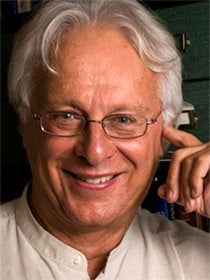Zunger to receive inaugural theory award from Materials Research Society
Alex Zunger, a professor at the University of Colorado Boulder, will receive the inaugural Materials Theory Award at the 2011 Materials Research Society (MRS) Fall Meeting on Nov. 30 in Boston. The Materials Theory Award, endowed by Toh-Ming Lu and Gwo-Ching Wang, recognizes exceptional advances made by materials theory to the fundamental understanding of the structure and behavior of materials.
Zunger is being recognized for his “development of the Inverse Band Structure approach to materials by design and the foundational developments of methods of First-Principles theory of solids, leading to innovative and transformative studies of renewable-energy materials and nanostructures.”
His fundamental work includes the fifth-most-cited paper in the 110-year history of Physical Review (out of more than 350,000 articles published in the journal). He also is the recipient of the John Bardeen Award of the Minerals, Metals and Materials Society (TMS), the Rahman Award of the American Physical Society (APS), the Tomassoni Physics Prize and Science Medal of the Scola Romana di Physica in Italy and the Guttenberg Award of Science of Germany.
Zunger has made seminal contributions as a theorist working in the area of condensed matter and materials physics. He made foundational contributions to the development of the theory methodologies that enabled predicting a wide range of the properties of solids even before they were measured. Such developments include the earliest first-principles pseudopotentials for greatly simplifying theory of many-electron systems, the momentum-space total energy approach for predicting the ground-state properties of solids, and the development of exchange-and-correlation functions for describing the fundamental electron-electron interactions in density-functional theory. His theoretical work on semiconductor alloys, complex photovoltaic semiconductors and nanostructures were contributions at the forefront of these fields.
His recent work is motivated by the goal to predict structural arrangements to design materials with desirable, “target” electronic properties. Prior to Zunger’s proposal of an “inverse approach,” the standard protocol was to first state the underlying structure of a solid or molecule (e.g., its symmetry, or structure type), then predict the system’s properties (e.g., optical, mechanical, electric, magnetic) through quantum calculations. However, this approach did not reveal how the atomic structure should be changed to achieve a certain target property.
Zunger’s idea was to start by articulating the material property desired for a particular technology (e.g., optical, mechanical, electric, magnetic) and then calculate the structure that would have the target property. Together with his collaborators at the National Renewable Energy Laboratory (NREL), he showed how one could predict "nanostructures by design," as well as "magnetism by design," or even "impurities by design."
Zunger's work now forms the basis for an office of science “Energy Frontier Research Center on Inverse Design,” combining his theoretical work with the experimental work of groups at (NREL), Northwestern University, Stanford SLAC National Accelerator Laboratory and Oregon State University, who are realizing some of these target structures.
Zunger received a Ph.D. from Tel Aviv University, Israel. He held postdoctoral research positions at Northwestern University and University of California, Berkeley. At NREL, he established the Solid State Theory group where he has mentored more than 75 postdoctoral fellows and published over 600 papers in refereed journals, including over 150 in high-impact Physical Review Letters and Rapid Communications. The impact of his work is partially reflected by an "h factor" in the mid-‘90s. He is a fellow of the American Physical Society.


